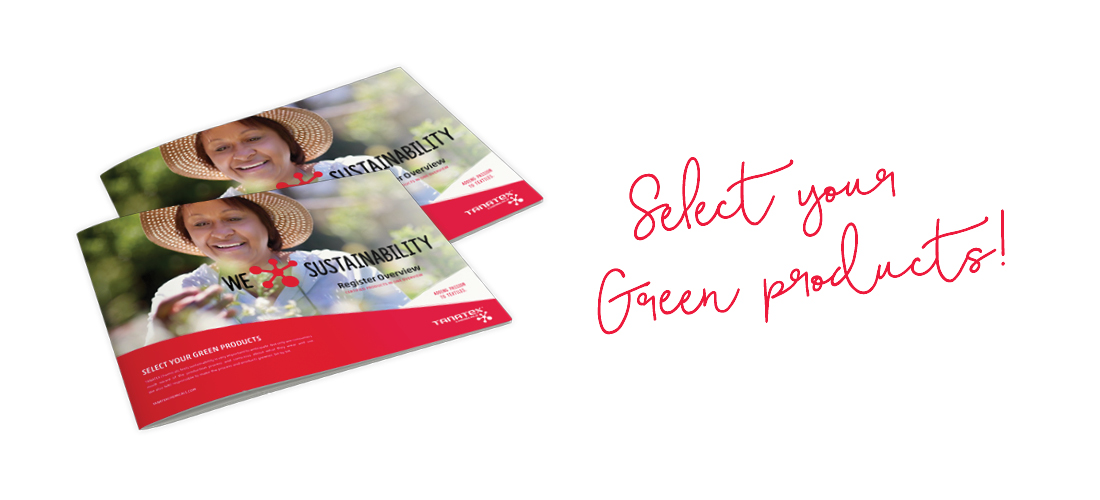Why look beyond the MRSL?
Sustainability has passed the hype peak and is officially a big deal. Increasingly, brands implement certification programs and lists of substances (MRSLs). These are not allowed to be used uncontrollably by the suppliers in their production process. Sometimes they have no choice, because of governmental regulations, but luckily, more and more brands simply want to practice what they preach. How does this development affect them and their suppliers? Should they look into Bluesign, Öko-Tex and ZDHC, or others and “try to catch them all”? Not if you ask us. We dare you to look beyond the MRSL and focus on something bigger. MRSLs are there for a reason: make sure you are too.
The MRSL briefly explained
The Manufacturing Restricted Substances List, known as MRSL, indicates which substances are restricted throughout the manufacturing process. These substances are harmful to people, animals or the environment in general. In the past, there was only the RSL (Restricted Substances List) which sets requirements for the final article to protect consumers. The MRSL was developed to set requirements for the production process to protect workers and the environment. Suppliers should make sure the chemicals they use should not contain the restricted substances in concentrations above the maximum MRSL limit.
RSL versus MRSL
In comparison with the RSL, the MRSL dictates that the restricted substances in the final article should be below the maximum RSL limit. Let’s say you have a chemical input containing 100 ppm formaldehyde. The limit for the MRSL could be 150 ppm, but for the RSL this limit can easily be 16 ppm. If you use no more than 10% of the chemical input for the production of the textile article, you probably won’t exceed the RSL limit.
At the bottom of this page, you can download our brochure to select your green products!
A tangle of lists and certifications
One of the issues with MRSLs is that there’s no such thing as the list (no matter what the initiators say). Brands, environmental and inter-branch organisations: many have created their own list to work on a better future with their partners- in their own way. The Bluesign standard, for example, is an extensive method to review the complete production process (from MRSL to RSL), as nearly all (M)RSLs are covered by their substances list. Then there’s Öko-Tex, that used to review the final article exclusively, but recently relaunched a more elaborate ECO-Passport. A third well-known list is ZDHC, which is the textile industry’s answer to the Green Peace Detox campaign. All of these lists have common end goals, but their strategies, audits and requirements differ.
Four wins of being on the list
Certifying for one or several standards can take some time, especially when you need to control substances you’re currently working with. From a business point of view, however, complying to MRSLs provides you with four important wins:
1. CSR/Branding: it proves your company highly values sustainability.
2. Customer relations: certification makes you an attractive supplier to customers that are looking for certified partners.
3. Efficiency: when you already work on limiting the usage of harmful substances for one list, it will probably be easier for you to comply with a new one, for example when you get a new customer.
4. Competitive advantage: although the popularity of sustainability programs is increasing, there are still a lot of competitors that don’t qualify. When you’re certified for (e.g.) Bluesign or Öko-Tex, you set yourself apart from at least a part of your competition.
Should I comply with as many lists as possible?
When you look at the reasons above, you’d almost think that you should comply with as many lists as possible. The truth is, that was never their point. Brands that initiated the MRSLs did so to prove they work on a better environment by engaging their suppliers. This means that compliance is a good thing to aim for, but it doesn’t make your own sustainability program. Second, complying with a MRSL takes time and money. We therefore suggest you find out what’s important to you and your customers, and make this information leading when you decide which lists you want to comply with. This way, the motivation to make a difference comes from within your organisation, making it easier to start the transition towards a more sustainable production process. It will also help you build a strong brand in the long run, as an unambiguous and effective sustainability strategy makes you more believable than stating you’re “working on a better future in general”.
What about us?
At TANATEX , we support sustainability programs that we believe are important. We have a high focus on water savings and the limitation (or even avoidance) of hazardous chemicals. This is reflected in the programs we’re involved in. In all of our activities, we keep this focus in mind, whether we’re developing, fine-tuning or co-creating with partners. We believe in the power of certification programs, but we also feel there’s more work to do. As a textile chemical provider, we have a responsibility in helping our customers (and their customers) by developing new and more sustainable products. This way, we create a movement at the very beginning of the production process. As a result, making it easier for other partners in the supply chain to follow into our footsteps. And hopefully, one day we’ll be able to create the list that exceeds every MRSL in the textile industry.






